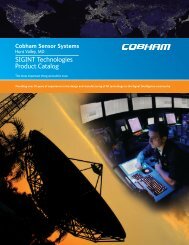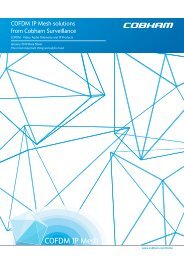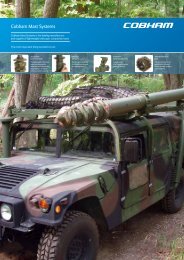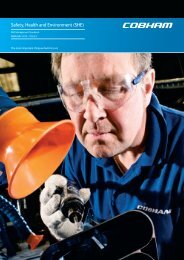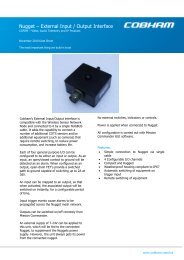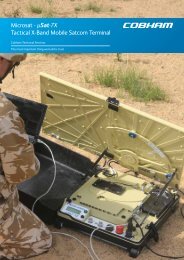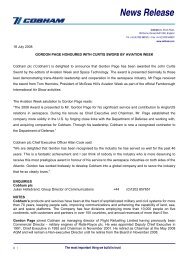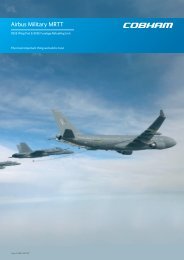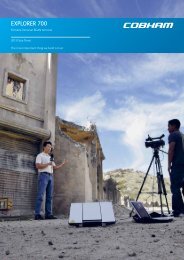COFDM - Video, Audio Telemetry and IP Products
COFDM - Video, Audio Telemetry and IP Products
COFDM - Video, Audio Telemetry and IP Products
- No tags were found...
You also want an ePaper? Increase the reach of your titles
YUMPU automatically turns print PDFs into web optimized ePapers that Google loves.
SOLO Central Receiver – <strong>COFDM</strong> Digital <strong>Video</strong> <strong>Products</strong>How does SOLO technology work?The basic video source used in Cobham Surveillance products is yourcurrent stock of cameras <strong>and</strong> lenses with a PAL or NTSC output. TheSOLO product range has been designed to make use of many commonconnectors, user interfaces <strong>and</strong> mounting patterns found on youranalogue products, helping to minimise your investment in transitioningto Cobham digital.It’s helpful to think of the transmitter <strong>and</strong> receiver in three distinctsteps:• The first step is the conversion of your analogue camera’s outputto a digital, compressed signal consisting of “1s” <strong>and</strong> “0s”, yourdigital data stream. Cobham has chosen to use the MPEG2 <strong>and</strong>MPEG4 st<strong>and</strong>ard, which is mature <strong>and</strong> well defined• The next step is to optionally encrypt the data using AES, <strong>and</strong>then modulate the data <strong>and</strong> prepare it for RF transmission.<strong>COFDM</strong> utilises significant redundancy, producing excellent resultsin high-multipath environments• The data is duplicated many times during interleaving process.Because of the interleaving <strong>and</strong> redundancy the information ispresented in different carriers or even within different frames.If one carrier is corrupted, it has little impact on video quality,as the data is repeated on another carrier. This provides therobustness in the system. Digital Signal Processing on the receiveside is able to recombine all this data into a single video stream.In the SOLO product range, you have the option of narrowb<strong>and</strong>transmission at 1.25MHz or 2.5MHz channelisation, or wideb<strong>and</strong>transmission, at 6, 7, or 8MHz per channel.In the narrowb<strong>and</strong> configuration, approximately 400 carriers are used,versus about 2000 in the wideb<strong>and</strong> configuration. A major benefit ofusing the 400 carriers, is that fewer carriers give you more power percarrier, which extends the coverage area. 1.25MHz <strong>and</strong> 2.5MHz areinherently lower noise due to a narrower b<strong>and</strong>width. Although fewercarriers are more susceptible to multipath, this is negated by the fulltime spatial maximum ratio combining technology that is used. Thesecond benefit simplifies the RF front end design where phase noise iseasier to manage.In testing, the narrower channelisation is often found to be the bestmode of operation, in particular when transmitters are within closeproximity to each other.04For further information please contact +44 (0)1489 566 750


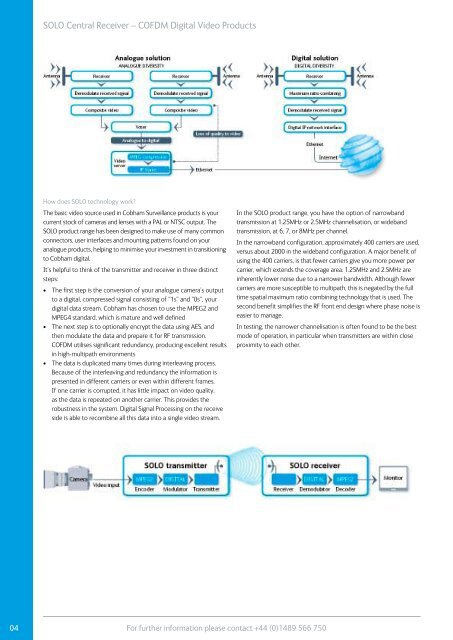


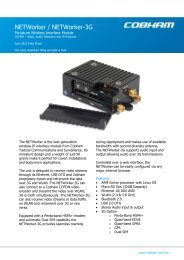
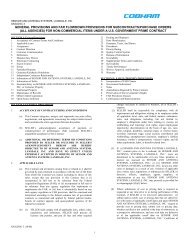
![NC1147 (pdf 1.47 mb) Nitrogen Concentrator [OBIGGS] - Cobham plc](https://img.yumpu.com/51124104/1/190x245/nc1147-pdf-147-mb-nitrogen-concentrator-obiggs-cobham-plc.jpg?quality=85)
